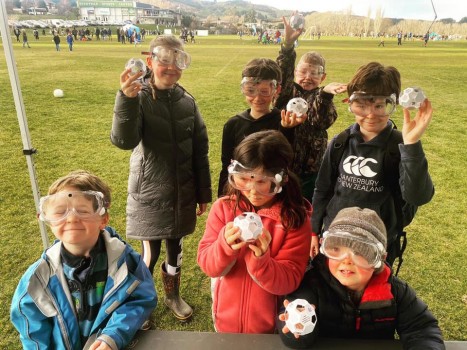Otago Museum Partnership
1 April, 2021

Kids who discover the buckyball shape will never see footballs in the same way again.
Our partnership with Otago Museum saw the development of ‘The Future is Nano’ workshops. These were run at the museum during school holidays, demonstrating how nanotechnology can be used to mitigate climate change through better photovoltaics, solar concentrators and metal organic frameworks.
New photovoltaics developed by researchers at the MacDiarmid Institute were also featured in the Otago Museum’s Global Science Show – a Twitter-based collaborative project hosting regular shows to celebrate science communication around the world.
An Otago Museum curated exhibition created in collaboration with the MacDiarmid Institute, Unlocking Curious Minds and the Dodd Walls Centre, is dedicated to helping resolve the gender imbalance that exists in STEM by building relationships between female role models in STEM and young people. A significant aspect of this project is ‘100 women, 100 words... infinite possibilities’, a digital portrait exhibition where people nominate women in their community who make science, technology, engineering and math meaningful to them.
As part of Otago Museum’s Education weekly programme for the Gifted and Talented Education (GATE) group from Anderson’s Bay Primary School, students have been learning about nanotechnology and how it can help combat climate change, including through better photovoltaics, solar concentrators and metal organic frameworks.
Otago Museum this year took our science to sports grounds around Dunedin with its Sideline Science Programme. Our cardboard push-out buckyballs (replicas of nano-sized buckyball structures of 60 carbon atoms), were a huge hit amongst the football players who could take a buckyball to hang from their ceiling at home, along with their end of season trophies. Footballs will never be seen the same way by the kids who discover the power of the buckyball shape, and know that tiny buckyballs are made from 60 carbon atoms.


